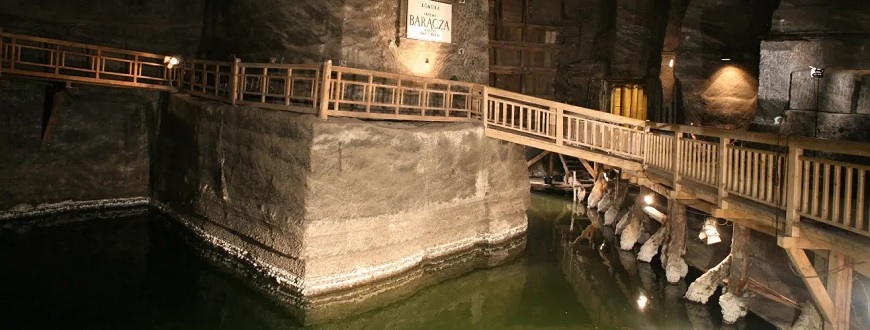The Wieliczka Salt Mine was founded in the 13th century and is the second oldest salt mine in Europe. Salt was mined continuously from medieval times and specifically from 1290 until 1996, as salt reserves were depleted.
Since 1978 it has been included in the list of UNESCO World Heritage Sites. The Salt Mine extends to nine (9) underground levels and reaches a depth of 327 meters, with more than 2,040 chambers and 300 km of corridors carved on solid volumes of salt, as well as underground lakes. Gradually the use of the Salt Mine changed and it was transformed from an industrial factory into a world-famous tourist attraction, a place of unusual events, and a health center. The most important attraction inside the salt mine is the Museum, located on the third floor, at a depth of 130 meters. For several years, the salt miners were creating impressive works of art made of salt which still adorn the salt mine halls.
Particularly impressive and richly decorated is the "Chapel of Blessed Kinga", a cathedral measuring 54 m by 17 m and 12 m high. The construction of this underground church took more than 30 years (1896-1927), while 20,000 tons of solid salt were used. Everything in the temple, from the chandeliers to the religious items, is made entirely of mine salt.
Salt chandeliers hang from the roof of the church; the Holy Table and The Crucified Christ dominate the hall, while the walls are decorated with salt reliefs of biblical representations. There is also a sanatorium on the premises of the salt mine for patients whose therapy requires staying in an environment rich in iodine. More than 2 million tourists visit the salt mine every year.
Further information at: https://www.wieliczka-saltmine.com/







